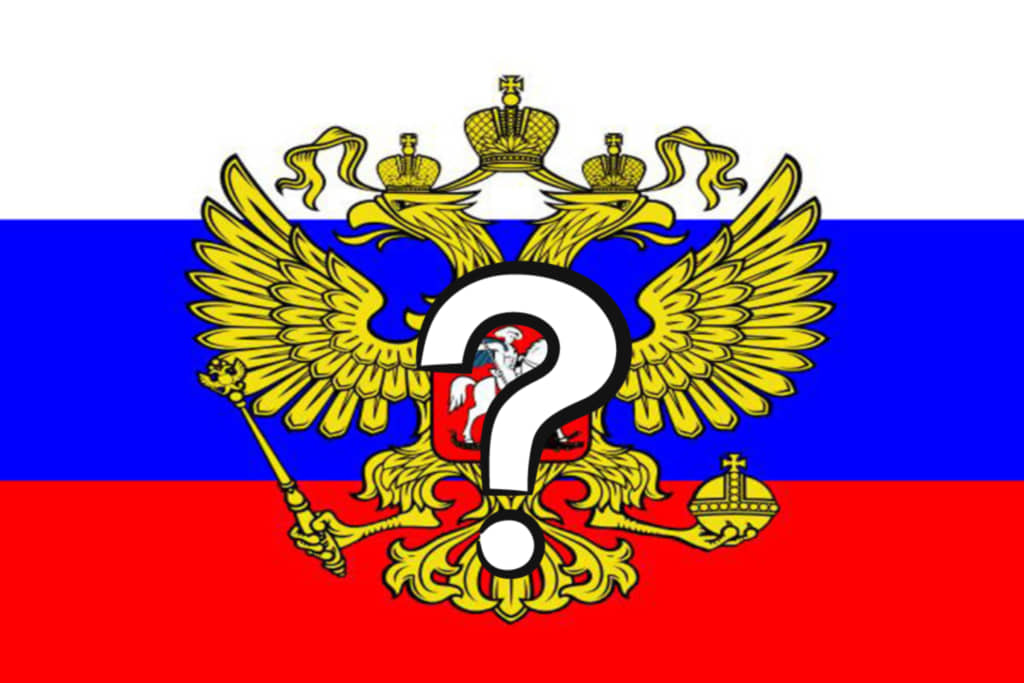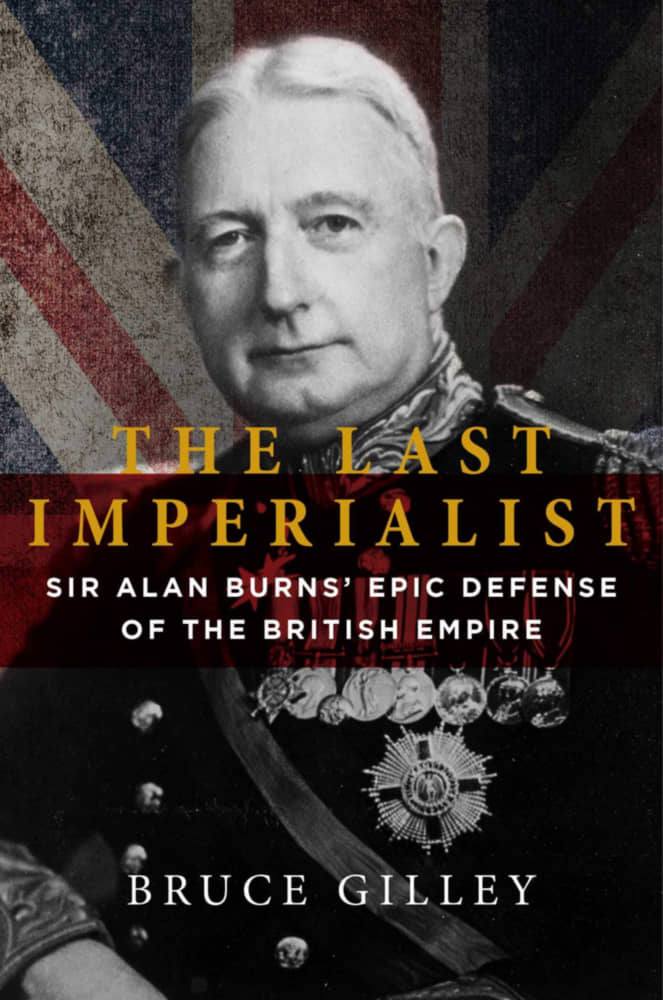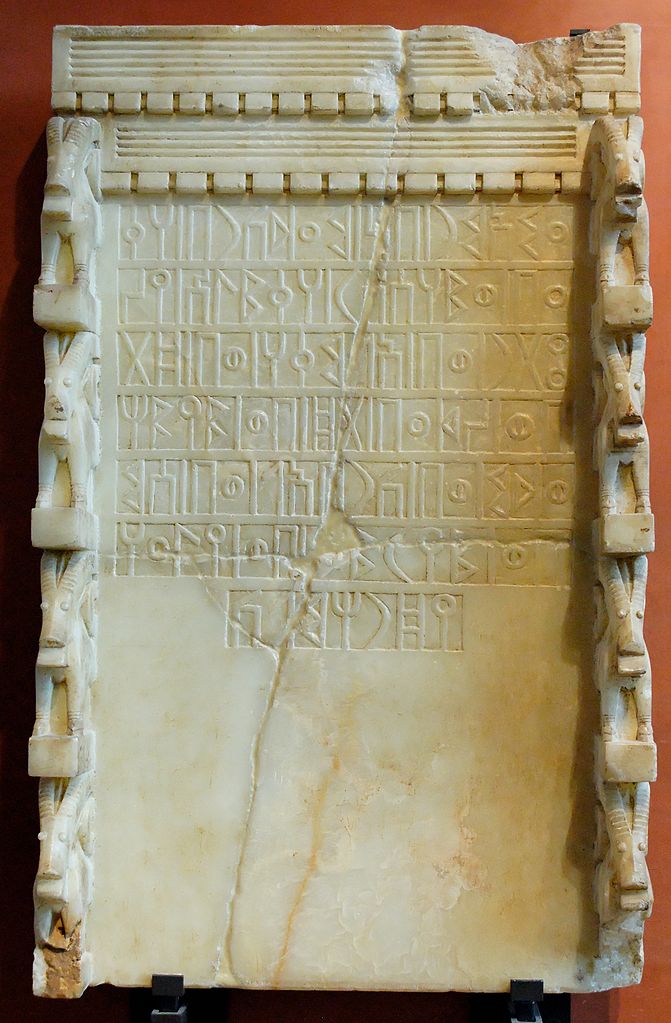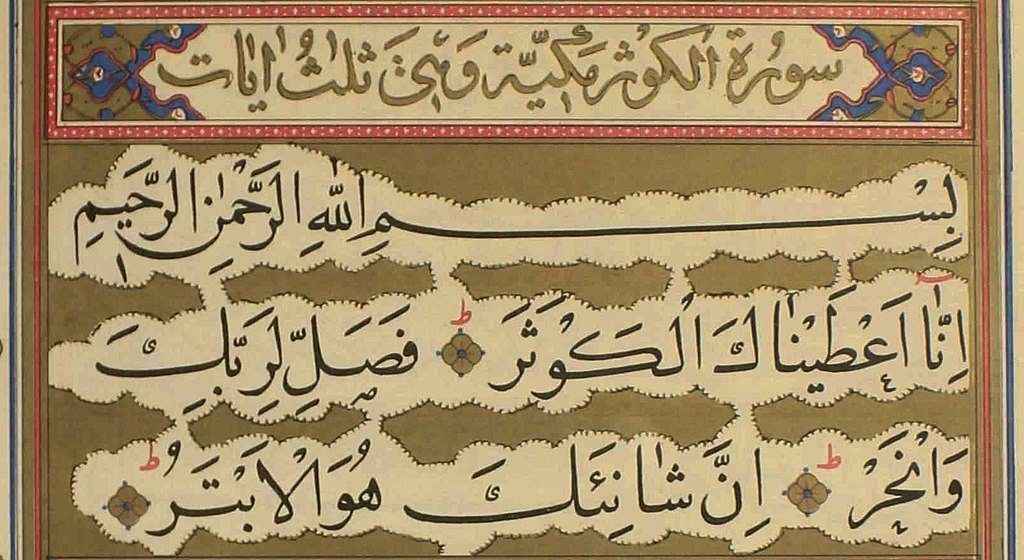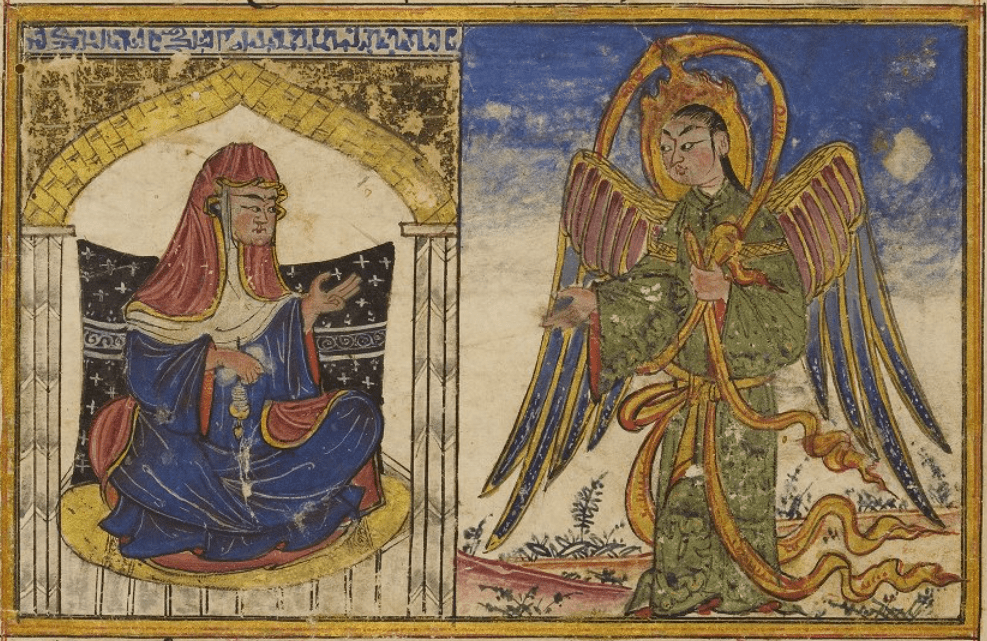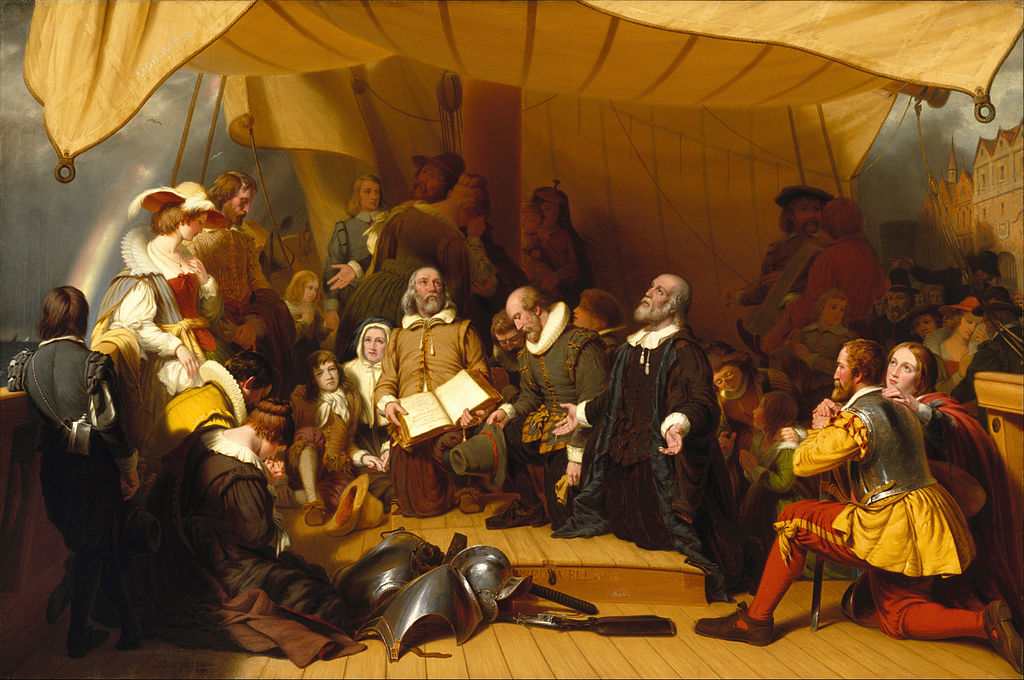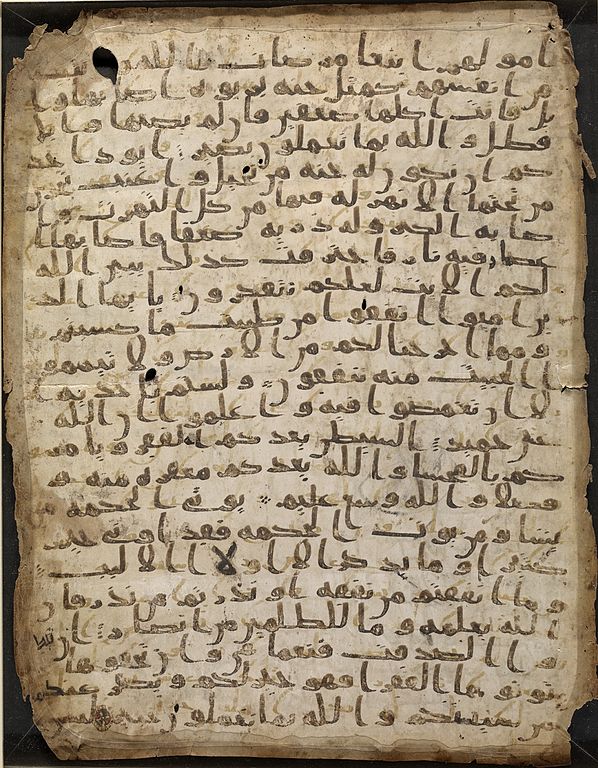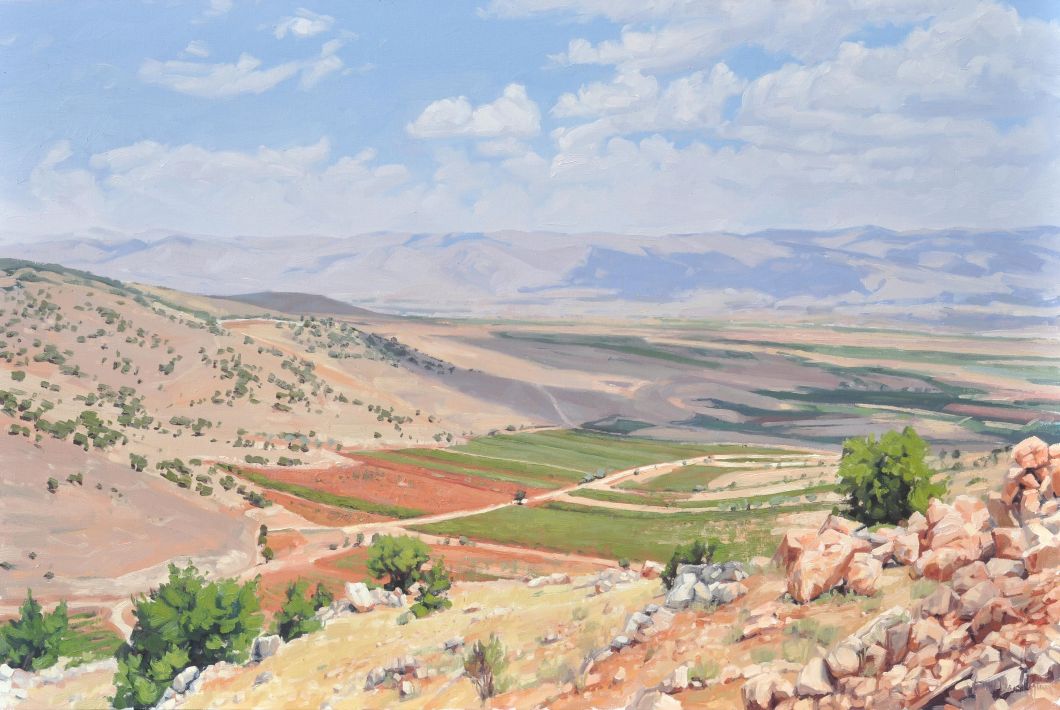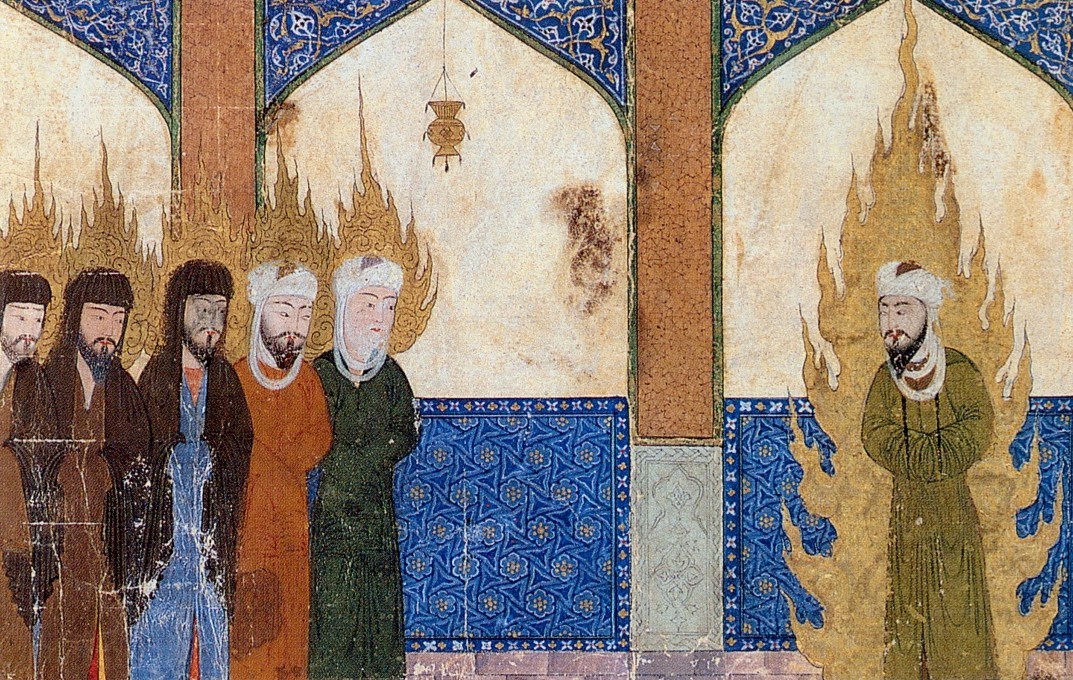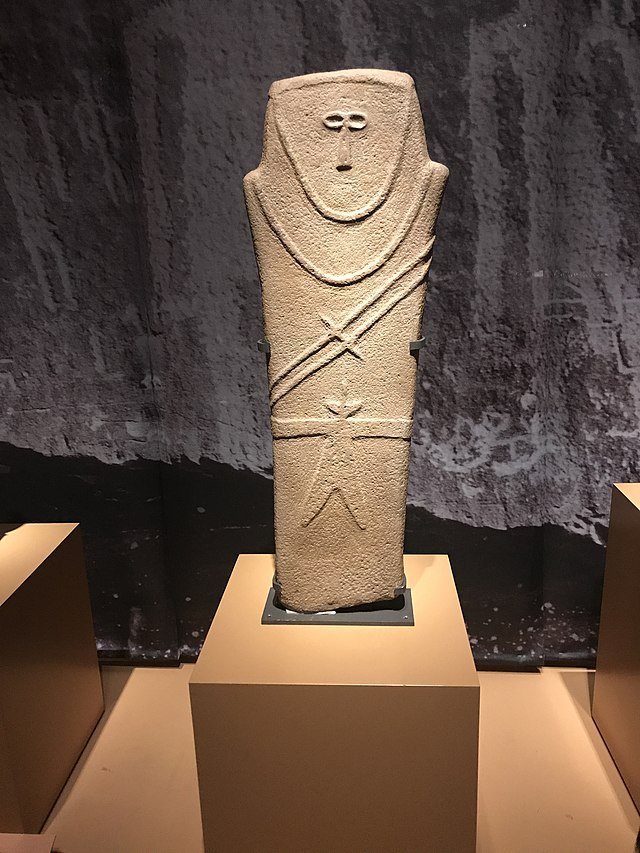What follows is a ready compendium of the various arguments made in the West against Russia. We are publishing this because we believe in an open discussion, critical though it is of what we do here at the Postil. This article also elicited responses from Jacques Baud, Wayne Cristaudo, from Israel Lira, while Alan de Benoist gave everything an appropriate context.
As a sometime contributor to The Postil, I feel obliged to write a few lines regarding the conflict in the Ukraine, since this journal has taken a view I find rather grotesquely surreal. One of the surprising things about this conflict is that the President of the Russian Federation Vladimir Putin, for it is by all accounts more Putin’s conflict than Russia’s, has found and odd group of diametrically opposed groups, largely amongst the extreme wings of the Western political spectrum: the far right (anti-Americanism in Europe), and the far left (anti-capitalists). Both support him and his conflict, legitimately enough, in what they see as their own best interest, and to serve their own goals. The weaponisation of this conflict in the West, while less lethal than the tragic events in the Ukraine, are no less destructive in my view.
My impression, though I may be wrong, is that those who oppose Western liberal democracy, or see it as no longer working, tend to see either Russia (or the former Soviet Union) and/or Putin in a soterial sense. The left especially, rightfully points out problems caused by neoliberalism and globalisation. Particularly the right is correct in signalling problems caused by globalism and wokeism. These are, as I have written, two sides of the same coin, both espousing basically a race to the bottom. The West is certainly in a state of disarray, reeling from the incessant blows of the “Culture Wars.” Western leaders, who incessantly instrumentalise crises, often of their own making, to their advantage, continually seeking to erode the democratic foundations and intrinsic unity of our societies, thereby increasingly displaying their tyrannical agenda. In any war, be it the Russian invasion of the Ukraine or our own Culture Wars, truth is the first victim, followed shortly thereafter by common sense and mutual confidence. Chaos and paranoia as a rule lead straight to tyranny.
The question then is whether the current malaise in the West can be helped by supporting Putin and or Russia? But when confronted with a housefire does one ring a pyromaniac or the fire brigade? The former ensures total destruction, the latter offers the possibility to save as much as possible and to “build back better.” The fascination of some in the West for the newest avatar of Русский мир or Pax Russica, “Orthodoxy, Autocracy and Nationality” is a tad surprising. Russia has long been convinced that it embodies the true soul of Europe and that through it Europe, gravely infected by liberal ideas, can be reformed or restored.
Indeed, there is much wrong with the West at the moment, even the reality of the concept itself and its achievements are questioned by ideological zealots, often the self-proclaimed (leftist) liberators of yesteryear, in essentialising notions of race, gender, etc. see traditional values, such as the nuclear family, as vile, oppressive constructs with no reality, scientific or otherwise—such is now espoused by many in Western governments and has entered school curricula as indoctrination. Often they use legalistic notions of (gender, racial) “equality” (basically, “chosifier l’être”) and instrumentalise “Climate Change”, “Covid”, etc. to further their agenda in the courts, thereby largely avoiding democratic scrutiny through “politics off no alternative” (Merkels Politik der Alternativlosigkeit), e.g., with regards to mass migration and the “Green Deal.”
In the face of this onslaught, the system itself and its incumbent division of power, while suffering from some erosion remains fundamentally intact. One need not regard “mainstream media”, there are good alternatives through which one can inform oneself, indeed the obligation of every enfranchised citizen. Unlike Russia, our press is still free, the fact that some choose to self-censure is not proof to the contrary. Unlike Russia, we may demonstrate for or against the war in Ukraine. We have elections, but our governments are can only ever be as good as our participation, from choosing and supporting good, able candidates, doing the requisite legwork to ensure their free and fair election, without demonising opponents. Complacency and defeatist lethargy are the “BFF” of tyranny.
The question is whether Russia, which has no liberal democratic tradition at all, or any notion of personal liberty for that matter offers a viable alternative. Russian geopoliticians, such as the new regular “Postil” contributor Aleksandr Dugin seems to advocate that due to the fact that Europe and Asia are, unlike Africa, the Americas or Australia, one continent, we somehow share a common destiny (under benevolent Russian suzerainty of course), for which historical arguments are concocted (facts are always gratuitous for ideologues, regardless of their affiliation[s]). The distinction between “West” and “East” in Europe is, however, long-standing and which date back well before the establishment of the Tetrarchy by Diocletian in 293. The differences only increased after the Fall of the Western Empire in 476. These were in part cultural and thus also linguistic, the Latinate West and the Greek East, but also religious as ultimately manifested by the Great Schism of 1054 (which had been preceded by two previous, shorter lived ones, the Acacian from 494-519 and the Photian form 863-867). One of the distinctions between the Eastern and the Western Church was related to the notion of Caesaropapism (“the complete subordination of priests to secular power”, see here for a discussion on the continuing effects hereof). In the West, the Papacy was eventually able to assert its independence from state(s). In the East the Church was largely subject to the state (an instrumentum regni), gaining both a new quantity and quality in Russia especially during the reigns of Ivan IV, Peter the Great and the Bolsheviks (one might add here the third way, that of Islam which through the caliphate basically abolished the state in favour of the “Church” [dār al-islam]).
The Western division between Church and State, asserted by the former since mediaeval times (and thus not an innovation concocted by the Enlightenment) against the latter which incessantly desires sacrality, a fundamental division of power (as it is separates the temporal from the eternal) which is the prerequisite of freedom, since it allows believers, who are also subjects (or citizens), a choice on which to follow in any given matter. Rights and freedoms only have validity when they can be asserted, otherwise they rest moot, as was the case with the seemingly liberal 1936 Constitution of the Soviet Union which also entrenched the monopoly of the Communist Party.
When one observes such historical developments one can look at discontinuities or for continuities. The Soviet Union can either be considered as an entirely new entity emerging from the fallout of the Great War, or as a continuation (“under new management”) of the czarist regime, the one European land empire that survived, thanks to timely structural remodelling. The Russian revolution(s) had been expected since the “Springtime of Nations” in 1848 (missed by Marx and Engels, who hurriedly wrote the Communist Manifesto to capitalise thereupon ex post facto) when it became clear that Imperial Russia was irreparably backward. Vladimir Putin, the former KGB officer, noted in his ‘State of the Union’ address in 2005 that “First and foremost it is worth acknowledging that the demise of the Soviet Union was the greatest geopolitical catastrophe of the century… as for the Russian people, it became a genuine tragedy. Tens of millions of our fellow citizens and countrymen found themselves beyond the fringes of Russian territory … The epidemic of collapse has spilled over to Russia itself.”
This geopolitical agenda as espoused by Aleksandr Dugin, often seen as a chief advisor of Putin, can be found in his fascinating and influential work The Basics of Geopolitics: The Geopolitical Future of Russia Основы геополитики: геополитическое будущее России (1997): “In principle, Eurasia and our space, the heartland Russia, remain the staging area of a new anti-bourgeois, anti-American revolution… The new Eurasian empire will be constructed on the fundamental principle of the common enemy: the rejection of Atlanticism, strategic control of the USA, and the refusal to allow liberal values to dominate us. This common civilizational impulse will be the basis of a political and strategic union.”
Such ideas were championed by Putin in his speech of February 21 which basically initiated warfare in the Ukraine. This teleological address personated history—in his de facto declaration of war, Putin stated that “modern Ukraine was created entirely by Russia, or to be more precise, by Bolshevik and communist Russia. This process began almost immediately after the 1917 revolution, and Lenin and his associates did it in a way that was extremely hard on Russia—by separating, by cutting off what is historically Russian land. He elaborated on this idea by saying: “Soviet Ukraine is the result of the Bolsheviks’ policy and can rightly be called ‘Vladimir Lenin’s Ukraine’. He was its creator and architect.”
Even a superficial knowledge of the history of the Russian Revolution and the accompanying fall of the Tsarist Empire indicates that the modern Ukrainian state came into being not because of Lenin, but against his will and as a direct reaction to the Bolshevik putsch in Petrograd in October (November in the Gregorian calendar) 1917. The Bolsheviks had attempted to take control of Kiev, but were defeated. Thereafter, in January 1918, the Central Rada, the revolutionary Ukrainian parliament, dominated by socialist and leftist parties and led by Ukraine’s most prominent historian, Mykhailo Hrushevsky, declared the creation of the Ukrainian People’s Republic. It encompassed most of the current Ukrainian territories within the borders of the Russian Empire, including the Donbas (Donets Basin) mining region. The new state wanted to maintain federal ties with Russia, but after the Bolshevik invasion in January 1918, the Central Rada declared Ukraine’s independence.
The Bolsheviks went to war with the Ukrainian government under the banner of their own Ukrainian People’s Republic—a fiction created to give some legitimacy to the Bolshevik takeover of Ukraine. Bolshevik troops massacred the population of Kiev, killing hundreds, if not thousands, of its citizens, including Metropolitan Vladimir. The Central Rada had to leave Kiev, but soon returned, having signed an agreement with Germany and Austria-Hungary, whose troops entered Ukraine in the spring of 1918 and drove the Bolsheviks out of its territory, including the Donbas. The Germans quickly replaced the democratic Central Rada with the authoritarian regime of Herman Pavlo Skoropadsky, but the democratic Ukrainian People’s Republic was restored when the Germans withdrew from Ukraine in late 1918. The Bolsheviks moved in again, this time under the banner of their opponent, the Ukrainian People’s Republic, officially independent of Russia.
After the first defeats in Ukraine, Lenin came to the conclusion that the formal independence of the Ukrainian state, coupled with concessions in the area of language and culture, was absolutely necessary if the Bolsheviks were to maintain their control over Ukraine. He believed that Ukrainian aspirations for independence were so strong, not only among Ukrainians in general but also among the Bolsheviks themselves, that they required the granting of a degree of autonomy and status equal to that of Russia within the Soviet Union, the new state declared to be created in 1922.
Furthermore, Lenin’s creation of new nation states was not just a tactic to keep the Bolsheviks in power as Putin professes, but as part of his adherence to Marxist historical determinism: the Revolution should not have occurred in unindustrialised Russia, thus it had to pass through the requisite preceding stages from the feudal to the capitalist with the rise of the bourgeoisie, accompanied by the concepts of nation-states and nationalism. Hence the invention of numerous ethnically based Soviet Socialist Republics in the early days of the Soviet Union. One of Stalin’s achievements as head of the People’s Commissariat for Nationalities was to resettle Russians throughout the Soviet Union, so as to ensure Russian predominance throughout. The contemporary reverberations of both policies continue to keep this part of the world inherently unstable.
Putin’s remark “then, both before and after the Great Patriotic War, Stalin incorporated in the USSR and transferred to Ukraine some lands that previously belonged to Poland, Romania and Hungary” forgets to mention that after the Second World War, Poland was reduced in size by some 20% (29,900 sq mi) and moved West of the so-called Curzon-Line (with forced migration), basically the Soviet Union kept its Western border as per the Molotov-Ribbentrop agreement of 1939 and after which Soviet propaganda condemned the Free French as British ‘mercenaries.’ The fact that Pierre de Gaulle, an English version of his speech was published in the June edition of The Postil, opens his speech with the words “our peoples are linked by long years of friendship and by the blood shed against the Nazis” seems to forget that at the incipit of the Second World War the Soviet Union was an ally of Germany, not of Britain. And he seems to have forgotten who liberated France in 1944. This applies to the estimated 21 million casualties incurred by the Soviet Union, the enemy of my enemy is my friend, against Germany in World War 2, which contrary to Putin’s claims were not all ethnic Russians nor citizens of the Russian SFSR. De Gaulle (petit-fils) seems not to have have understood that his grandfather was intent on playing the USA and the USSR against each other (his Realpolitik, “les jeux d’alliance et d’équilibre”), to further the perceived power of the “Grande Nation”; De Gaulle’s famous trip to see Stalin in Moscow in 1944, was in part to limit Maurice Thorez’ (the head of the PCF) political ambitions and to put France on an equal footing with the other Western allies, also after the war, and not in adulation of Stalin or the Soviet Union.
As for the pseudo-historical arguments proposed by both Putin and the younger de Gaulle, one can conclude that Lenin was not instrumental in the foundation of the Ukraine, but of the Soviet Union and, for the first time in history as a political entity distinct from its empire, the Russian Federation. It was the Soviet Union from which Putin’s predecessor Yeltsin withdrew the Russian Federation in 1991. Mr Putin is president of the Russian federation, not the Czar of the Russian Empire nor the First Secretary of the Soviet Communist Party.
Putin and his allies have furthermore made much about Western, especially NATO aggression towards Russia. There was no promise made by James Baker to Mikhail Gorbachev in 1990 limiting eastward expansion of NATO, the future of the Warsaw Pact was not actively being discussed (although the Eastern question certainly loomed). It merely concerned the “reunification” of Germany and the ensuing withdrawal of Soviet forces (paid for by Germany). Gorbachev gave his green light, the Helmut Kohl agreed to bankroll Russia’s economy and the Western occupation forces would not take over former Soviet bases. Indeed, after the “4+2 talks” (Treaty on the Final Settlement with Respect to Germany), through which there would be no more occupying forces in Germany, and the American, British and French military presence, always limited to former West Germany, was greatly diminished. Furthermore, Russia and NATO-members are all signatory to treaties regulating the fundamental principals of European security, including through the Helsinki Final Act (1975), the Charter of Paris (1990), the NATO-Russia Founding Act (1997) and the Charter for European Security (1999), which not only recognise the sovereignty of the Ukraine, but also that each country has a sovereign right to seek alliances of its own choosing. Putin and his acolytes moreover tend to neglect any mention of the Budapest Memorandum on Security Assurances (1994) in which the independent Ukrainian Republic, which at the end of the Cold War had the world’s third largest nuclear arsenal, relinquished these weapons in exchange for which Russia, the UK and the USA would “respect the independence and sovereignty and the existing borders of the Ukraine.” (Ironically enough, Putin claims in his aforementioned speech that “If Ukraine acquires weapons of mass destruction, the situation in the world and in Europe will drastically change, especially for us, for Russia. We cannot but react to this real danger, all the more so since, let me repeat, Ukraine’s Western patrons may help it acquire these weapons to create yet another threat to our country”). In a recent press conference, Putin has sought to get around this by seeing the current Ukrainian government as de-facto illegitimate: “a new state arises, but with this state and in respect to this state, we have not signed any obligatory documents.”
This statement would seem to indicate that Putin is aware of the binding nature of such treaties regulating the security architecture of Europe. This would seem to be one of the reasons why his military adventure is termed a “special military operation” (специальной военной операции). Article 2(4) of the Charter of the United Nations, to which the Russian Federation belongs, states: “All Members shall refrain in their international relations from the threat or use of force against the territorial integrity or political independence of any state, or in any other manner inconsistent with the Purposes of the United Nations”, which renders null and void the classical principle of uti possedetis, victory in war giving good title to conquered territory. Simply put, Putin cannot declare war, as he would then have to recognise the Ukraine as a state and then would not be able to hold territory he might conquer: international law also ratified by the Russian Federation, no longer acknowledges forcible territorial acquisitions, and a treaty procured by force or the threat of force is void; in other words, the uti possidetis interpretation of peace treaties is now obsolete. The Ukraine by all accounts, as do many other former colonies, is territorially defined by uti possidetis juris, recognised on numerous occasions by Russia as we have seen.
With regard to this, in a speech given a little over a year ago entitled “On the Historical Unity of Russians and Ukrainians”, Putin gave his views hereon. Again, one could debate Putin’s merits as a historian and a linguist—one might ask in return that since English and Scandinavians were once mutually intelligible, and the 12th-century Icelandic Gray Goose Laws state that Swedes, Norwegians, Icelanders, and Danes spoke the same language, the dǫnsk tunga, does this have any relevance for modern politics? If the Kievan Rus’, founded by the Varangians, Vikings as were the Rus’, is the crucible of what became Russia, why is the modern state Slavic (and Orthodox Christian)? Or maybe the Ukrainians are the real Russians? How far does one go back? A shared history, language, culture and even religion does not necessarily have political significance as the American Declaration of Independence teaches us:
“When in the Course of human events, it becomes necessary for one people to dissolve the political bands which have connected them with another, and to assume among the powers of the earth, the separate and equal station to which the Laws of Nature and of Nature’s God entitle them, a decent respect to the opinions of mankind requires that they should declare the causes which impel them to the separation.”
One of Putin’s primary casus belli is the alleged treatment (“genocide”) of Russians and Slavs by the (Western) Ukrainians, slandered with the stock trope “Nazi” (seemingly a rehash of the Latvian, Estonian, Finnish and Polish “Operations” of the NKVD 1937-1938). While the Ukraine’s treatment of ethnic minorities may not be perfect, its record is certainly no worse than Russia’s (and which abolished the representative body, the Mejlis of the Crimean Tatar People in 2014 and outlawed it in 2016 allegedly due to “the use of propaganda of aggression and hatred towards Russia, inciting ethnic nationalism and extremism in society”). And seemingly there are no “Nazis” in Russia—one might wish to consider the portrait of Mimitry Ukin, the commander of the infamous Wagner Group or Dmitry Rogozin, former deputy prime minister and until recently head of Roscosmos, Russia’s space agency who has well-known national socialist leanings, among others. He has likened the Ukrainian president Zelensky to Hitler, the former’s Jewishness is not a problem as the Russian Foreign Minister Sergeï Lavrov pointed out, the latter was part Jewish. The kettle calling the pot black.
Feeling he had no other choice, Putin commenced his “Special Military Action” on February 24. While I think the decision was unnecessary, it is his good right as a leader to do such, since as Clausewitz noted, “war is an instrument of policy; it must necessarily bear its character, it must measure with its scale: the conduct of war, in its great features, is therefore policy itself, which takes up the sword in place of the pen, but does not on that account cease to think according to its own laws.”
One might discuss in extenso what Putin’s original (and current) objectives may have been. Clearly he was backing on a weak American government, after the disastrous retreat from Afghanistan, and a complacent Europe dependent on Russian energy to get through the last winter to sit by idly. It has by all accounts proven to be a severe miscalculation. Initially, last November when the American government reported Russian troop build-ups on the Russo-Ukrainian border, later on the Belarus-Ukrainian border, I was somewhat skeptical—180,000 men to attack Ukraine, about 4/5 of the size of the Ukrainian Army at the time (remember Zhukov had a 5:1 superiority over the Germans at the start of the Vistula–Oder offensive in January 1945). What was he thinking? Five months into the conflict, whose goals were and remain unclear, Putin has lost a significant amount of assets, has seemingly resorted to unorthodox methods of recruitment, even the Wagner Group seems to be lowering standards, all to basically advance 20 kilometres westward in five months, allegedly liberating the local persecuted Russian minority by wholesale destruction of cities and towns through Stalin’s god of modern warfare, artillery (Артиллерия — бог современной войны) – in 1945 the goal was not to liberate Germany but to bring it to unconditional surrender—the ecstatic crowds cheering their liberators after the Anschluß remain oddly absent today, while by contrast large numbers of Ukranian refugees in the West are Russophones, seeming with no desire to flee or relocate to the Родина-мать or Motherland. Russia seems to have great difficulty in realising strategic objectives as tactical victories on the field, their inadequately maintained equipment has performed poorly (and newer equipment is being replaced by long antiquated predecessors), their logistics have left a lot to be desired, as does their command and control (the exercise of authority and direction by a properly designated commanding officer over assigned and attached forces in the accomplishment of a mission), not to mention the training and motivation of soldiers now exhausted on an overextended front.. The battlefield losses, even by conservative estimates, are approaching or exceeding those of the Afghanistan War (1979-1989), which had devastating effects on the morale of the former Soviet Union and now further exacerbates the Russian demographical decline.
Despite Putin’s February 24 warning “I would now like to say something very important for those who may be tempted to interfere in these developments from the outside. No matter who tries to stand in our way or all the more so create threats for our country and our people, they must know that Russia will respond immediately, and the consequences will be such as you have never seen in your entire history. No matter how the events unfold, we are ready. All the necessary decisions in this regard have been taken. I hope that my words will be heard”, the West, largely the US and the UK, has been equipping Ukraine. The grievances uttered by the Russian government and her supporters in the West are a bit sanctimonious—as was noted above, Russia has not declared war, Ukraine de jure remains a sovereign and independent country free to seek aid and pursue alliances as it wishes. That Putin seems de facto intent on disarming Russia is entirely his choice. Putin has improvidently unclenched a war he could never win. Such colonial wars rarely if ever go in favour of the (would-be) colonialists.
Putin’s foolhardy gambit is having and will have severe repercussions for Russia and the world. Russia will be able to survive Western sanctions no doubt, but with a much reduced economic output. Western corporations which have left will not return any time soon, Western Europe, finally heeding American warnings on Soviet and Russian energy since the early eighties, is looking for alternatives elsewhere—who knows Canada might actually realise its full potential now. The Russian economy and military, dependent on weapons exports will due to their poor performance – who would now want to buy a three-man self-loading, or rather exploding, battle tank such as the T-72 or T-90 – see market share evaporate. Sweden, long neutral since having lost Finland to Russia in 1808/09, and Finland have now decided to join NATO. The result, especially after Putin’s de facto incorporation of Belarus, is a much longer land border between NATO and Russia, the lack of a buffer will produce a new geopolitical “curtain.” However the current Ukrainian war will end, the “Ukraine” (however defined) will be a NATO-member. And Russia will need decades to reequip its armed forces.
The real winner of this game is the People’s Republic of China, an enduring beacon of liberty and personal freedom. The truth be told, Putin’s Russia was always Peking’s proxy, but now this middleman’s façade also melts like yesteryear’s red snow, the Middle Kingdom has its sights now unbridled on “Eurasia”—the “Belt and Road Initiative” has the same strategic aim as the Transcontinental railroads in nineteenth century North America and the Trans-Siberian Railway: geographical unification to enforce political unity. China is now buying Russian energy, well under the market price. In addition, every dollar the United States puts in NATO, every artillery piece, every shell or bullet it sends to Ukraine is one less for the Asia-Pacific, which has been the stated American strategic interest of this century. China has every interest seeing Russia weakened and drawing NATO into a protracted European conflict.
In the final stages of the Second World War, Joseph Goebbels proposed a separate peace with the Western Allies to continue the war jointly, against the Soviet Union, rejected by both Hitler and Churchill. It would surprise me if a similar initiative might be proposed by Russia soon.
Putin and his ideologues such as Dugin correctly insist on a multi-polar world. They forget this is what we have and have always had—Egypt vs, the Hittites, various Western Empires against the Persians, etc. Since the end of the Cold War, the world has been more multi-polar than ever, emerging nations such as India and Brazil entering the world stage politically, increasingly also the European Union, and of course China. The real gripe of Russia seems to be that its “polar” influence is less than desired, it is being eclipsed by others, that it as a nuclear power and self-declared heir of the Soviet Empire has some intrinsic right to be a “big player” internationally. This is warranted neither by Russia’s current economic output nor by its standard of living, neither by its strategic geography (e.g. lack of all-weather ports), nor its direct cultural influence (how many people learn Russian these days? How imitable is its culture?). For better or for worse, Russia is an economic dwarf with imperial ambitions. This seems to be the real Caucasian “Casus knacksus”, the real reason for Putin’s Special Military Operation: without Belarus and Ukraine, Russia can never be more than a regional power, it needs these regions. But due to the War, Russia’s geopolitical influence is waning—at the St Petersburg International Economic Forum, a Potemkin financial summit, the Kazakh President Kassym-Jomart Tokayev made it quite clear to President Putin that Kazakhstan did not recognise the Luhansk People’s Republic (LPR) and Donetsk People’s Republic (DPR), the breakaway territories of Ukraine, as independent republics, describing them as “quasi-state formations”, understandably due to the Russian minority concentrated in the North of his country. Since then, seemingly indicating increased desperation, Russia has made claims to former territories such as Alaska and Lithuania. It is only a matter of time before the fourteen republics within the Russian Federation and the autonomous regions, largely of non-Russian ethnicity, will loosen their ties with the Motherland, once subsidies become unaffordable. Russia does not seem to understand that no state, not even a superpower, has an inherent right to a zone of influence, such, like all forms of dependence, depends on the voluntarism of both parties. How attractive is Dugin’s Eurasian model cited above for non-Russians? One is reminded of Thomas Jefferson’s averment (November 29, 1775): “Believe me, dear Sir: there is not in the British empire a man who more cordially loves a union with Great Britain than I do. But, by the God that made me, I will cease to exist before I yield to a connection on such terms as the British Parliament propose; and in this, I think I speak the sentiments of America.”
Finally, as concerns the most disingenuous claim made by Russia (and China) that NATO is a mere instrument of American hegemony and unipolarity. Anyone with even a superficial knowledge of military affairs knows that NATO due to its structure (and equipment, though in light of the now proven uselessness of Russian equipment, this no longer rings as true as it once did) can only ever be a defensive alliance, first and foremost to integrate former belligerents into one alliance, in which the United States has an arbiter role. It is a voluntary European alliance, and unlike the Warsaw Pact, one is free to leave (as did France from 1966-2009), and not all Europeans countries are members (notable neutral states are Ireland and Austria). The seeming American predominance is by and large not due to American imperialism, but rather European (and Canadian) complacency, letting the USA pay for their defence. Putin has accomplished what even Trump could not achieve, convincing numerous member states to finally pay their share (2% of GDP). NATO had no desire to expand eastwards, former Warsaw Pact member states were the drivers NATO-expansion in the 1990’s and early years of the 21st century based on their experiences with the bounteousness of Russian liberation, and their inexplicable consternation, especially after the Transnistria War (the Russian minority being composed largely of veterans of the 14th Guards Army and their descendants), the first and second Chechen wars (1994, 1999) the interferences in South Ossetia, Artsakh, and Abkhazia (the US from the Clinton presidency increasingly forsook Atlanticism and set its sights Far[ther] East; maybe Russia felt neglected?). Who could blame them? If other Eurasian countries such as Lithuania, Poland, Hungary, especially Germany, or even Luxembourg were to redraw borders as per Putin’s logic, well then we would have steroid-enhanced dystopia. Putin, like most of his like-minded colleagues of past and present is a narcissistic bully.
As for those in the West who admire and/or support Putin, also the horrific mayhem which he has unleashed unnecessarily, I offer two suggestions. First, if you are sincere, do as I once advised leftist admirers of the Soviet Union, move thither if you think it is better (and at the very least The Postil should be censored by the Russian government). Second, rethink the matter through, there is no need to throw the baby out with the bathwater, especially those who know no Russian and have deep little knowledge of its history and culture. What is to be gained by adhering to a foreign messiah, as Isaiah admonished the Judeans on the eve of Sennaherib’s invasion (2 Kings 18:17–25):
“Woe to the rebellious children, saith the Lord,
that take counsel, but not of me;
and that cover with a covering, but not of my spirit,
that they may add sin to sin:
that walk to go down into Egypt,
and have not asked at my mouth;
to strengthen themselves in the strength of Pharaoh,
and to trust in the shadow of Egypt!
Therefore shall the strength of Pharaoh be your shame,
and the trust in the shadow of Egypt your confusion.
For his princes were at Zoan,
and his ambassadors came to Hanes.
They were all ashamed of a people that could not profit them,
nor be an help nor profit,
but a shame, and also a reproach.”
Jerusalem held firm and survived, Sennaherib’s successor Esarhaddon initiated the conquest of Egypt in 673, Memphis was sacked in 671. Then like now, security arrangements crumbled, at the whims of despots, but new ones emerge in which those who have overplayed their hand tend to have little or no say.
In my experience, those who complain the loudest about the decline of the West, and hope for redemption from some bigoted foreign despot are those who participate the least in maintaining our liberal and democratic institutions, continuously whining in defeatist self-victimisation that all is lost. Government by the people for the people depends on citizens performing their civic duties (not to be confused with emotive addiction to one’s preferred social media guru)—work together with likeminded, join a political party (or found one), participate in civic, school board, provincial or federal elections, or become an election scrutineer. Our systems can ever only be as good as we are ourselves, and when it doesn’t work, we have no one to blame but ourselves. Stop complaining and start doing.
While we may not like our elected leaders, we need not even like President Zelynski—if we had only supported those we liked or agreed with, then Hitler would have won the Second World War, we would never have supported the Soviet Union against Hitler, after Stalin opportunistically switched sides (cf., Churchill’s famous quip, that “if Hitler invaded Hell I would make at least a favourable reference to the Devil in the House of Commons”)—but the Ukrainian struggle for their liberty and freedom, their dying defending values we (should also) hold dear should be an inspiration for us. It is a moral imperative to support the Ukraine in defending itself against aggressive tyranny, and unprovoked aggression, also on behalf of Russians. Those who support Putin because they share supposedly the same foes, the enemy of my enemy is my friend, delude only themselves and traitorously sell out Western liberal democracy. It might however be more worthwhile for them to stop supporting him and start learning Mandarin.
“Faute d’être en mesure de fonder par magie un État du monde tel qu’on souhaite, il convient de tenter de sauver ce qui reste d’un monde souhaitable” (Antoine de Saint-Exupéry, Lettres à André Breton [1942]) [If we cannot magically create a state of the world we want, we must try to save what remains of a desirable world].
[written, July 20, 2022]
Professor Dr. Robert M. Kerr studied Classics and Semitics largely in Vancouver, Tübingen and Leyden. He is currently director of the Inârah Institute, for research on Early Islamic History and the Qur’an in Saarbrücken (Germany).
